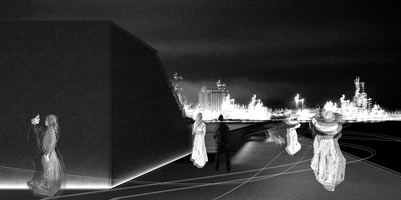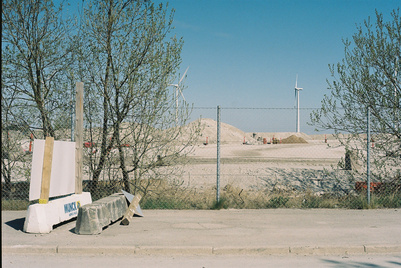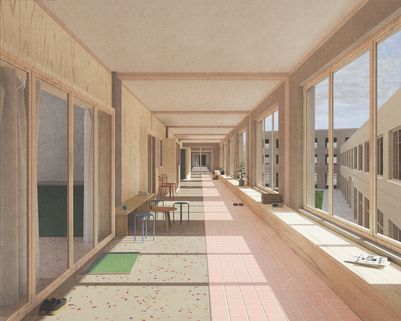The Academy : Last Meal
The Academy : Last Meal is a double staging of, on one hand, the PK52A student desk, designed for the Academy in 1955, as an infrastructure that frames the production of architects and architecture at The Royal academy, and on the other, of the final critique as the ritual that transforms the architecture student into Architect.
Upon entering Architecture School, you must acquire a desk (PK52A), a piece of cardboard to match the dimensions of the desk, a parallel motion bar, and a blank piece of paper. You draw that first line to ensure that the ruler (RULER from root *reg. Regere, regime, regina, rex) is parallel to the edge of the table.
This line is the horizon, they will tell you, and with one single line, you have created the entire world. It’s intoxicating, isn’t it? This is the moment. you are a world-making machine. Following in the footsteps of the creative god, calling the world into existence through the utterance of a line.
It all began with the Vitruvian Man, hanging suspended in abstract space. Inscribed in a circle, in a square, springing from his navel, pure vectorised idea. Somewhere down the line the man became Man. Capital M. REX and RULER. A universalised (white, male) body of perfect natural proportions. And his navel, a hinge that "transforms the body into geometry, nature into architecture"¹. Feeding, breathing life into Architecture as a living man.

And that line is the same line: time tapered to an arrow of progress, cleaving the world in two: nature/culture, mind/body, coloniser/colonised. A world of interchangeable parts, ready for the taking.
And that line is the same line: the growth curve that moves smoothly through infinite, scalable expansion, piercing clean through our bodies, shouting its course through our mouths like it's easier to imagine the end of the world than the end of capitalism.
"scalability requires that project elements be oblivious to the indeterminacies of encounter [...] thus, scalability banishes meaningful diversity, that is, diversity that might change things."²
Like when the LENE DAMMAND LUND on behalf of the school proclaims, that "KADK can't and shouldn't have the same diversity as the rest of society"³ And MARTIN KRASNIK agrees "No, you just have to deliver the highest quality of education possible"⁴
as if the two were somehow mutually exclusive.



Or when the told us, You are the elite, and we believed them. I saw it. The way we wore our architects like silk and shields.
Refuse the stories that gild you. (Gold, like all noble metals, is characterised by its lack of chemical reactivity). Become porous. Become too sensitive. Become minor. "Exchange focused ambition for scattered flight and love of masters for that rejection of master languages with which we began"⁵. Insert your protests into the map of architectural education, make them sprout and spawn, like dissident verbs, like if not the same diversity then what kind? Make the major stories stammer, producing languages of madness from the belly of architecture itself.




¹ Diana Agrest (1988) Architecture from Without: Body, Logic, and Sex
² Anna Tsing (2017) The Mushroom at the End of the World
³ Lene Dammand Lund and Martin Krasnik in conversation at the opening of
the school year 20/21 at KADK (now The Royal Academy)
⁴ ibid.
⁵ Jill Stoner (2012) Toward a Minor Architecture











